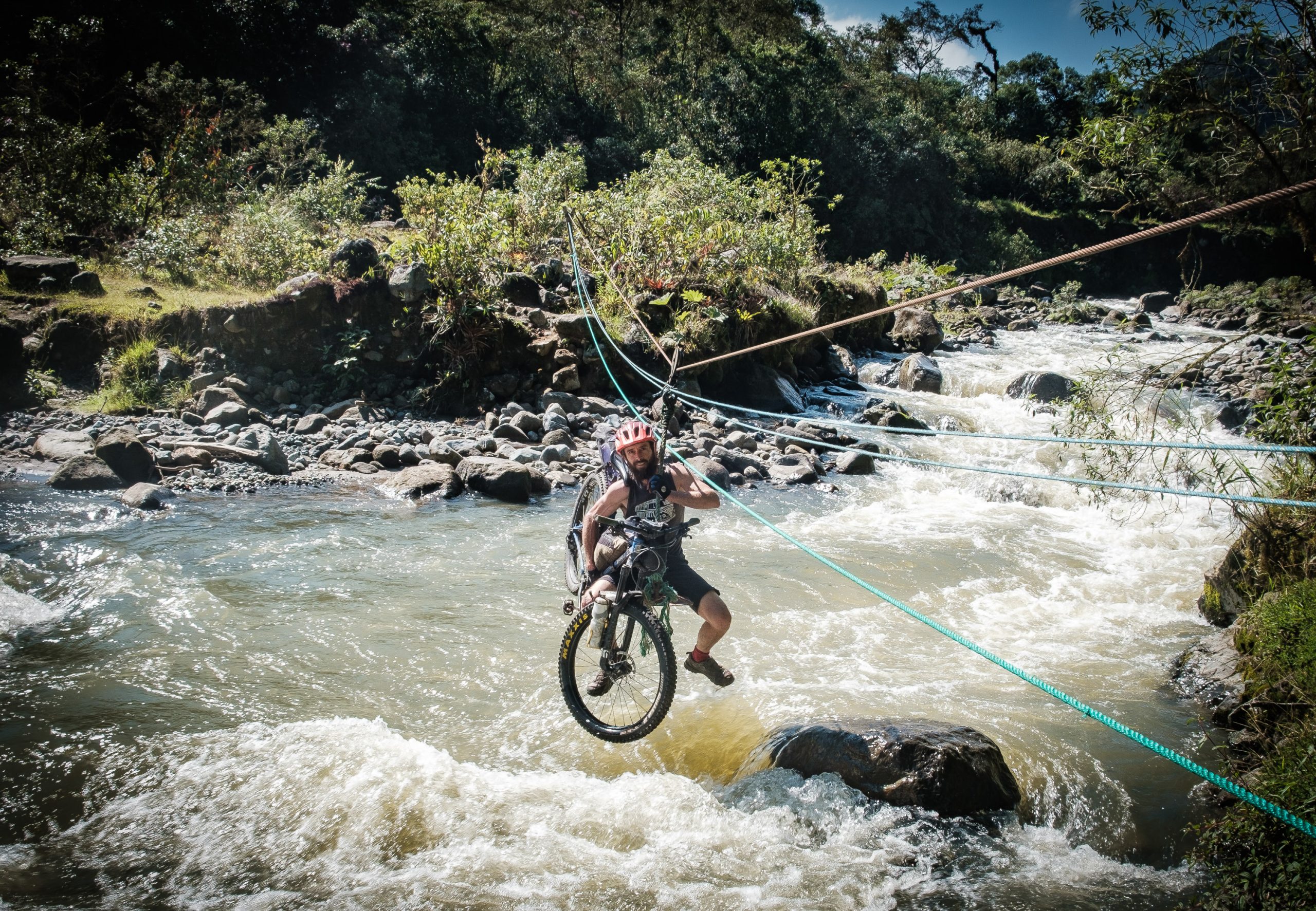It’s important to recognize that overlanding is not exclusive to the world of internal combustion, and in fact it more broadly refers to self-reliant travel to remote destinations. Bikepacking a valid form of overlanding, and in many respects, it’s one of the most authentic. After all, bikepacking bikes are designed specifically for off-grid travel from the factory, and intended to perform optimally when the tarmac ends. They are engineered with plus-sized tires, low-ratio gearing, dependable drivetrains, are field repairable, and feature many accessory mounts for racks, cages, and gear.
Crucially this form of overlanding forces you to pack just the essentials, and nothing else. As a result, there are no distractions, it’s just you, the bike, and the great outdoors. When you travel this way, life is simplified; you exist in the moment, and your senses become more in tune with the natural world. It sounds cheesy, but disconnecting from digital devices provides an elevated sense of being, and that feeling is very addictive. It was this realization that led me to quit my job in the city, buy a campervan, and live in it full-time to facilitate more bikepacking, kayaking, and mountaineering adventures.
In this series of articles, I feature heroes of the bikepacking world, individuals who similarly pursue this raw, human powered, form of overlanding, while discussing the cross-pollination with vehicle travel. I’ve already had the pleasure of interviewing Salsa Rider Pepper Cook, ultra-endurance athlete Lael Wilcox, and today, we look at the life, rigs, and equipment of Michael Dammer.
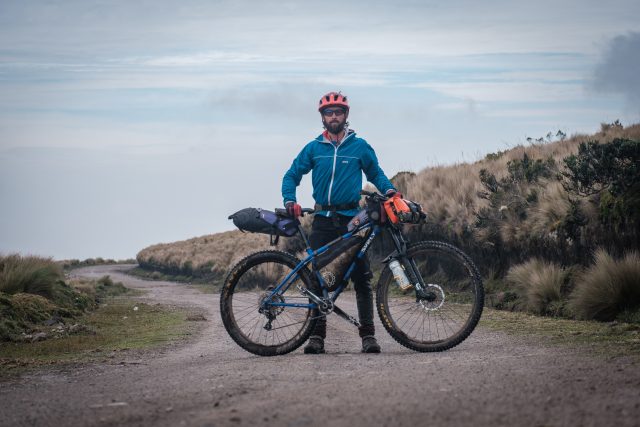
The Rider
Michael Dammer is a professional bikepacker, mountaineer, climber, paddler, farmer, and all-round outdoors guru who, alongside two other couples, runs an organic farm and adventure school in Ecuador. “The farm is located 3,000-meters above sea level in the middle of the Andes, I can see glaciated peaks from where we’re settled.” He begins the day at 4:00 a.m., milking the cows and goats, after which he prepares produce for the local community. “We provide 60-70 shares to local families. They buy ahead of time, and we deliver a basket with vegetables, cheese, yogurt, eggs, and occasionally, meat.”
The farmstead is run alongside an adventure school, which offers outdoor excursions for kids. “We prefer to do longer, multi-element adventures that are as self-sufficient as possible. There’s a tendency these days to keep children inside, and to shelter them from the great outdoors. However, life is not always comfortable or easy, and I believe learning to overcome adversity, problem-solving, and facing challenges in nature really contributes to a child’s development and well-being. The opportunity to bestow these skills on new generations is hugely rewarding.” Sustainable consumption and protecting the environment are also key themes on these trips, with the kids preparing food on the farm ahead of time. “We make it clear we don’t need to rely on pre-made meals, and that we can dehydrate our own vegetables, prepare beef jerky, granola, cookies, etc. It’s a lot of fun, and the same approach I take for my own expeditions.” Michael’s focus on sustainability does not stop at food, and dominates every decision he makes, including bikepacking. “I only work with companies that are committed to this lifestyle, and produce gear that’s responsibly manufactured, and made to last.”

The Bike
A rider’s bikepacking rig, much like an overlander’s vehicle, is a machine tailored to that person’s needs, and no two are the same. With that in mind, Michael stated his priority as being rugged simplicity, and that while he owns numerous bikes, he tries to run similar components across the entire fleet. “I’m particular about the parts we use, and if I can’t use the same on each bike, I’ll source something very similar. I need to have a connection between each bike, and to ensure components are interchangeable, which in turn makes the entire operation as efficient as possible.” One of the points that resonated with me throughout our interview is Michael’s focus on efficiency, and that keeping things simple and uniformed allows him to spend less time fixing bikes, and more time riding them. As someone who similarly owns multiple rigs, it has inspired me to fine-tune the optimal components for my style of riding, then apply them as best possible across all my bikes. This reduces the number of spare parts you require, saving money and space, and crucially, increases your time in the saddle.
Michael primarily rides Surly Bikes; a company based in Minnesota, who are pioneers of the bikepacking world. The company produces steel-framed adventure bikes that are designed to be tough, versatile, and adventure focused. His collection includes:
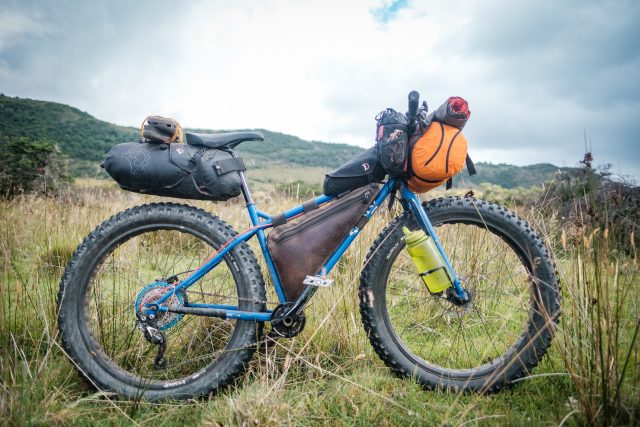
- Surly Bridge Club – All-road touring bike
- Surly Karate Monkey – Hardtail mountain bike for all trails
- Surly Krampus – All mountain 29+ bike
- Surly Big Fat Dummy – Off-road fat tire cargo bike
- Surly Pugsley – Extreme off-road expedition bike
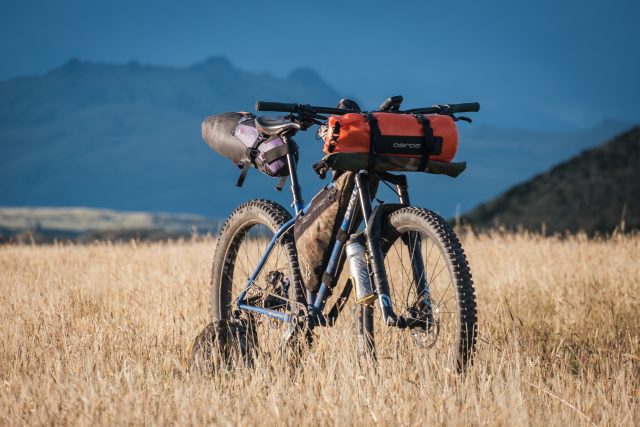
“I have a bunch of Surlys, which are shared with everyone on the farm,” Michael continued, “The common trend is that they’re all steel hardtails. I love the simplicity of this design; you can throw them on a bus or train, ride challenging trails, carry all your gear, and they provide access to super remote locations.”
At present, his main ride is a Surly Bikes Karate Monkey, which is configured for attacking local trails. It’s currently set up “mullet style,” which means a larger front wheel to tackle technical terrain (i.e., business up front), but a smaller rear wheel, which allows greater maneuverability and responsiveness (i.e., party in the back). However, he was quick to point out that with a few adjustments this same bike could be set up for a three-month dirt expedition. That said, when it comes to long off-grid tours Michael reserves his “Unimog” of the biking world, the legendary Surly Pugsley. The bikepackers among you will no doubt be familiar with this post-apocalyptic bug-out bike, but for those that don’t, the Pugsley is a dedicated expedition-ready fat bike. It features 26- x 4.3-inch tires (which can be run at very low psi for comfort on rough trails, crawling on rocks, or gliding over soft sand/mud); a long, stable wheelbase; and a huge selection of accessory mounts to ensure maximum versatility and load capacity. The company states, “Any bike will get you out there. Pugsley will get you home.” Sound familiar Land Cruiser owners? Michael concluded, “It’s important to ride a bike that you love, which adds to the overall experience; I’m sure people that overland in 4WD vehicles feel the same.”
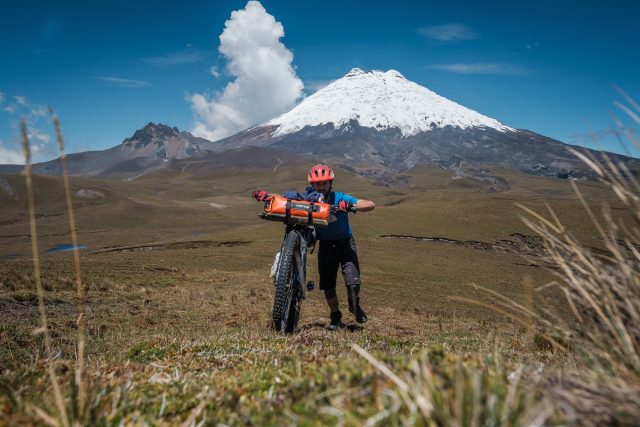
Bags, Racks and Accessories
The bikepacking movement has helped to establish hundreds of extremely talented and innovative small businesses who create bespoke, and often handmade, bike bags, racks, and accessories. Traditionally, bicycle tourists utilized four simple panniers (two small front panniers and two larger rear panniers), and while this arrangement still has many positives, it can be a little cumbersome when the tarmac ends. Alternatively, bikepacking seeks to make use of every inch of wasted space on the bicycle: this includes frame bags, handlebar storage systems, seat packs, accessory mount bags, and more. The approach ultimately distributes gear more evenly, thus improving handling, while also making the bike more streamlined, and therefore easier to carry and maneuver on technical terrain. There’s no one-size-fits-all bikepacking bike, and similarly, every rider’s luggage setup is tailored to their specific needs.
Michael has been making his own bags since he rode the length of Cuba at just 16 years old. “I needed panniers that were going to last, and that was hard to find in Ecuador, so I started making my own,” and “the farm I lived on was tanning leather so this was my primary resource.” Many years later he was introduced to the new wave of bikepacking bags, when Cass Gilbert (whileoutriding.com) showed up in Ecuador. “He arrived here with the first set of Revelate Designs bikepacking bags, and I was completely blown away. He provided a different perspective on loading gear on a bike, and demonstrated how this approach made the bicycle more capable. I never looked back.”
Michael’s current bikepacking setup is comprised of the following:
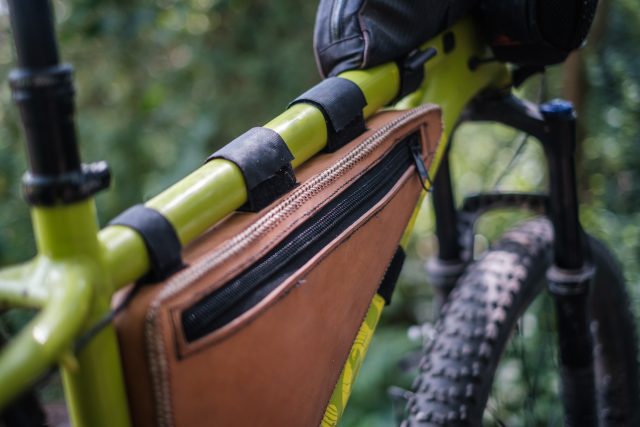
- Front rack – Surly 8-Pack rack
- Saddle bag/seat pack – Revelate Designs 8 or 14-liter seat pack
- Frame bag – handmade leather
- Top tube bag – Revelate Designs Mag-Tank or Gas-Tank
- Handlebar bag/system – homemade handlebar harness with Sea to Summit 12-liter drybag or AERO Spider Cradle with their 8-liter drybag
- Hip pack – Oveja Negra
- Rucksack
- Snack bags – Revelate Designs Feedbag in combination with homemade bags

His setup is designed to be durable, easy to repair, and largely compatible across all his bikes. It’s interesting that Michael still prefers many of his own handmade leather bags and accessories, despite having access to many bikepacking specific alternatives. There’s something magical about this approach, and I love that it reflects a tireless mission to reduce his impact on the environment and make use of the resources available to him.
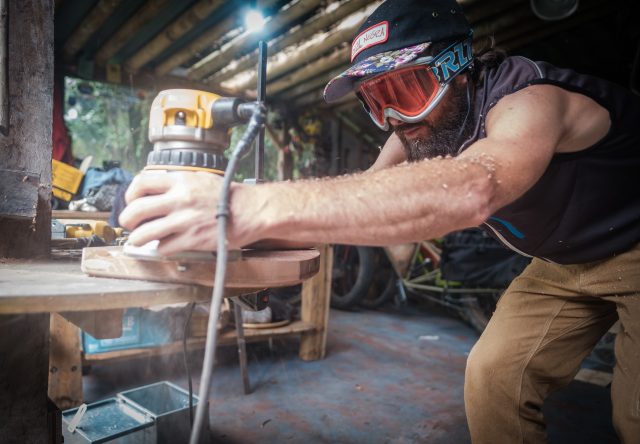
Camping and Gear
Weight on the bike is a killer, so Michael ensures he carries the absolute essentials and nothing else. However, there’s a fine line between minimalism and roughing it, and he highlighted that there are some luxuries he won’t do without. “I never leave behind my stove, even if I’m away for just two days. I really cherish a hot cup of tea or coffee in the morning; it’s a little comfort that makes the day. If something positively contributes to the experience then I’ll bring it along.” Similarly, as a photographer he rarely rides without a camera, and often packs a couple of lenses. He was quick to add that the camera is one of the few electrical devices he carries, and that one of the key objectives is getting offline. At present his pack-list incorporates the following gear:
- Tent/shelter – Either a homemade Bivy sack or a Black Diamond Megalight tent
- Sleeping – Feather friends “Sleeping Swallow 20-inch sleeping bag and Thermarest pad
- Cookware – Trangia alcohol stove, 1.5-liter stainless steel pot, wooden spoon, and Nalgene container
- Food – Mostly homemade dehydrated vegetables/soups, dried fruit, and beef jerky. I also pack quinoa, roasted barley flour (machica), butter from the farm, and dehydrated hot peppers
- Clothing and footwear – Shimano products: XM9 boots for long Alpine journeys, XM5 shoes for general bikepacking, and AM5 for Enduro
- Tech, navigation, and power – Garmin Etrex mounted on handlebar, smartphone with Gaia GPS, and a 10,000-mAh external power pack that can be charged with solar as a backup
- Camera and lenses – Fujifilm XT3 with a selection of lenses depending on trip: XF 16-mm f/1.4, XF 35mm f/1.4, XC 50-230mm, and XF 18-55mm
- Tools and spares – “Varies depending on route, but I’m rarely unprepared for an issue”
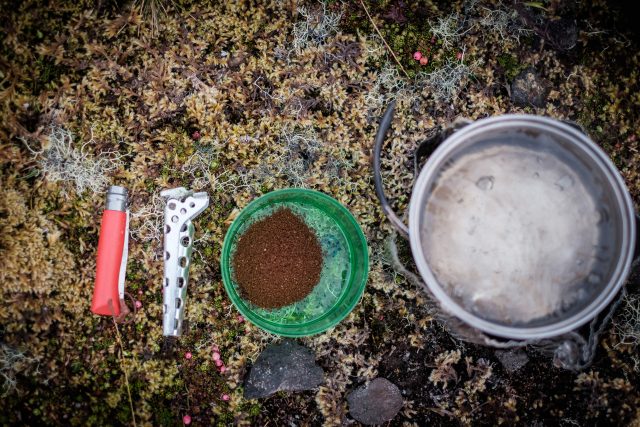

Adventure
Michael is a bikepacking legend, and well-known for his two-wheeled expeditions around the world, but his heart remains in South America. “Honestly, I’m still in love with exploring the Andes here in Ecuador, it’s just so raw and exciting.” He added that “ rides like the Arizona and Colorado Trail are epic, so flowy and relaxing, but there’s a chaos to this place, with cows, people, closed paths, lots of detours, and you really don’t know what you’re going to find. It’s a proper adventure.” It doesn’t matter whether you’re bikepacking, hiking, or overlanding in a vehicle, there’s something about embracing the unknown that often provides the best experiences and memories, even if at the time it’s challenging and frustrating. “I create a ride in my mind, look at a map, drop a few pins, then just head out there and make it happen. I don’t want all the answers. I live for the adventure, meeting people along the way and the Andes is very special for that.”
Michael is also a route pioneer, and most notably co-founded the legendary Trans-Ecuador Route, which was designed from scratch, and covers a colossal 1,400 kilometers (870 miles). “The purpose of this route was to bring awareness to Ecuador’s historic trails, which are disappearing. It’s a hard ride; physically demanding, steep, isolated, high-altitude, but it’s very special.” Mr Dammer doesn’t plan to stop there, and hopes to connect the Trans-Ecuador with the well traveled Peru Divide followed by Ruta de las Tres Cordilleras and the Bolivian High Andes traverse “Mama Coca” (460-kilometres/286 miles). “I dream about a route that will start in Colombia and finish at the tip of Argentina via remote mountain trails. The Andes Traverse, a dream that’s slowly taking shape with the contribution and effort of many adventurous bikepackers. The 2,000 kilometers (1,243 miles) from the Bolivian Salar to Mendoza, in the heart of Argentina, is a section that is highly appealing to me.” It would mean traversing extremely isolated mountain environments, which are dry, cold, and unique. The ideal environment for my Surly Pugsley.”
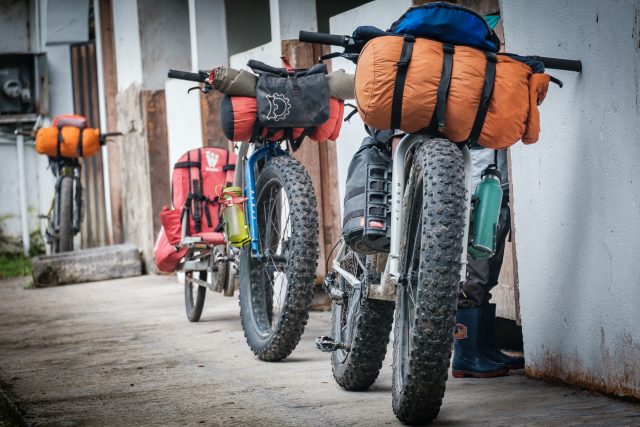
I finished our conversation by asking Michael why he chooses to travel by bicycle. “Many people in the world are unable to afford a car or motorbike, but even shepherds in the Bolivian mountains can relate to a bicycle and the experience of pedaling. In terms of overlanding, that arguably makes it arguably the most relatable form of transport anywhere in the world. The bicycle’s ability to unite people is unmatched, and that makes it very special.”
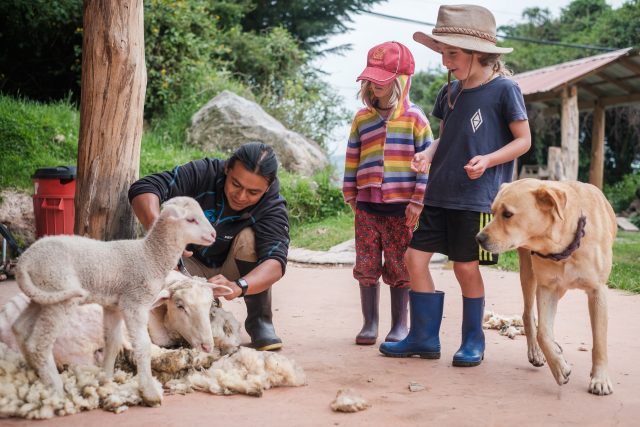

Where can we find you?
Instagram: @el_taraumara and @fincaorganicapalugo
Website: nahual.com.ec
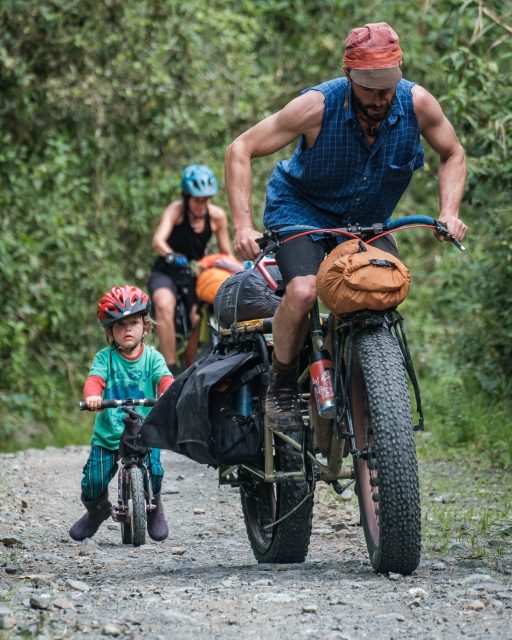
Our No Compromise Clause: We carefully screen all contributors to ensure they are independent and impartial. We never have and never will accept advertorial, and we do not allow advertising to influence our product or destination reviews.


